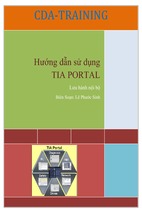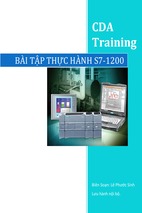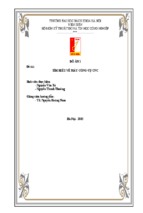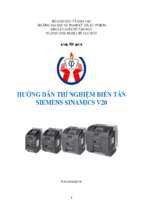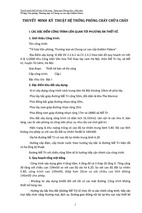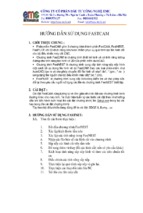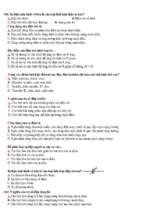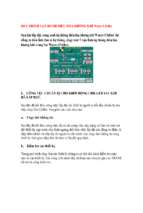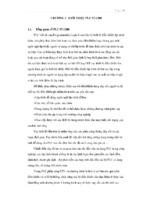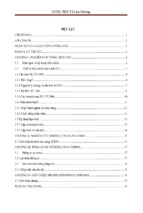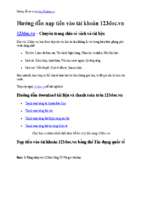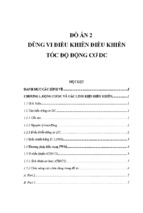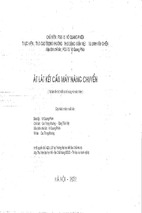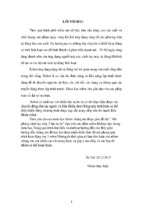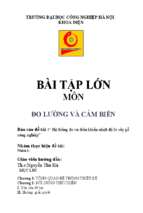EECS 142
Lecture 20: Passive Mixers
Prof. Ali M. Niknejad
University of California, Berkeley
c 2005 by Ali M. Niknejad
Copyright
A. M. Niknejad
University of California, Berkeley
EECS 142 Lecture 20 p. 1/32
– p.
Voltage Switching Mixers
LO
+RF
IF
RIF
−RF
LO
Instead of switching currents, we can also switch the
voltage.
In the above circuit, during the +LO cycle, switch S1
activates and feeds the RF to the output directly. In the
LO cycle, switch S2 activates and feeds an inverted
RF signal to the output.
This circuit requires good switches that turn on hard
(low on-resistance) and turn off well (good isolation).
A. M. Niknejad
University of California, Berkeley
EECS 142 Lecture 20 p. 2/32
– p.
MOS Switching Mixer
LO
+RF
IF
RIF
−RF
LO
A practical implementation
uses MOS devices as
switches. The devices are
large to minimize their
on-resistance with a limit
determined by isolation
(feed-through
capacitance).
We see that the RF signal
is effectively multiplied by
±1 with a rate determined
by the LO signal.
A differential RF signal is created using a balun or fed
directly from a balanced LNA.
A. M. Niknejad
University of California, Berkeley
EECS 142 Lecture 20 p. 3/32
– p.
MOS Device Feedthrough
G
G
Cgs
Cgso
Cgd
S
D
Cjs
Rch
Rbs
Cgdo
Cgb
S
Cjd
Cjs
Rbd
Rbs
D
Cjd
Rbg
Rbd
B
B
When the device is “on”, it’s in the triode region. Due to
the low on-resistance, the coupling through the
substrate and LO path is minimal.
When the device is “off”, the RF and LO leak into the IF
through the overlap and substrate capacitances.
A. M. Niknejad
University of California, Berkeley
EECS 142 Lecture 20 p. 4/32
– p.
Summary of MOS Switching Mixer
MOS passive mixer is very linear. The device is either
“on” or “off” and does not impact the linearity too much.
Since there is no transconductance stage, the linearity
is very good.
The downside is that the MOS mixer is passive, or
lossy. There is no power gain in the device.
Need large LO drive to turn devices on/off
Need to create a differential RF and LO signal. This can
be done using baluns or by using a differential LNA and
LO buffer.
A. M. Niknejad
University of California, Berkeley
EECS 142 Lecture 20 p. 5/32
– p.
MOS “Ring” Mixer
+RF
LO
LO
IF
LO
LO
−RF
The RF/LO/IF are all differential signals. During the
positive LO cycle, the RF is coupled to the IF port with
positive phase, whereas during the negative phase the
RF is inverted at the IF.
The MOS resistance forms a voltage divider with the
source and load and attenuates the signal as before.
A. M. Niknejad
University of California, Berkeley
EECS 142 Lecture 20 p. 6/32
– p.
Passive Mixer LO Power
RF
IF
RF
IF
LO
LO
Since gates of the MOS switches present a large
capacitive load, a buffer is needed to drive them.
The LO buffer can be realized using larger inverters
(approach “square wave”) or as a tuned buffer. A tuned
lowers the power by roughly Q but has a sinusoidal
waveform .
A. M. Niknejad
University of California, Berkeley
EECS 142 Lecture 20 p. 7/32
– p.
LO Power (cont)
For an inverter chain driving the LO port, the power
dissipation of the last stage is given by
2
Pinv = CVLO
fLO
C is the total load presented to the LO (two MOS
devices for the double balanced mixer, one MOS device
for single balanced).
VLO is the LO amplitude to fully turn the devices on and
off. The devices should be biased near threshold. fLO
is the LO frequency.
A. M. Niknejad
University of California, Berkeley
EECS 142 Lecture 20 p. 8/32
– p.
Tuned LO Power
For the tuned load case, the power is given by
Ptuned
2
VLO
=
2Rt
Rt is the effective shunt resistance of the tank. Since
the tank Q = ωLO Rt C , we have
Ptuned
2 f O
2
πCVLO
VLO
L
ωLO C =
=
2Q
Q
A high Q tank helps to reduce the power consumption
of the LO buffer.
A. M. Niknejad
University of California, Berkeley
EECS 142 Lecture 20 p. 9/32
– p.
H-Bridge Ring Mixer
+RF
LO
IF
LO
−RF
If PMOS devices are available, two CMOS inverters
form an H-Bridge, applying the RF input signal to the IF
directly during the LO cycle and inverting the RF input
at the IF output in the LO cycle.
PMOS and NMOS devices are sized appropriately to
maximize on-conductance and to minimize off
capacitance.
A. M. Niknejad
University of California, Berkeley
EECS 142 Lecture 20 p. 10/32
–p
RF Driver Stage
L1
+RF
LO
Rs /2
C3
−
IF
L3
Rs /2
LO
LO
LO
RF
L2
If the LNA is differential, then the RF port can be driven
through a LC matching network to maximize the RF
voltage amplitude presented to the mixer.
Note that C3 = C3′ + C3′′ . The capacitance C3′ and L3 are
used to form a resonant circuit at the RF port. The
inductor L1 and C3′′ form an L-matching network to
boost the source RF voltage.
A. M. Niknejad
University of California, Berkeley
EECS 142 Lecture 20 p. 11/32
–p
RF Driver Stage (cont)
L1
+RF
Rs /2
C3′′
C3′
L3
The above figure is the single-ended half circuit. The
role of the tank and L-match are now clearly dilineated.
The voltage gain of the L-match is given by
vRF
p
Rt
2+1
Q
= vin
Rt + (1 + Q2 )Rs
where
ωRF (L1 + L2 )
Q=
Rs
A. M. Niknejad
University of California, Berkeley
EECS 142 Lecture 20 p. 12/32
–p
Time-Varying Conductance
+RF
g(t)
g(t − TLO /2)
+
g(t − TLO /2)
−RF
IF −
g(t)
The RF voltage is applied
to a time varying conductance.
Note that if the
conductance of a the LO
switches is given by g(t),
then the conductance of
the LO switches is given by
g(t TLO /2).
The Thevinin equivalent source voltage is given by the
open circuit voltage
�
�
g(t)
g(t TLO /2)
vT = vRF
g(t) + g(t TLO /2) g(t) + g(t TLO /2)
�
�
g(t) g(t TLO /2)
= m(t)vRF
vT = vRF
g(t) + g(t TLO /2)
A. M. Niknejad
University of California, Berkeley
EECS 142 Lecture 20 p. 13/32
–p
Time-Varying Gain m(t)
For the MOS device and a given LO waveform, the
function m(t) can be calculated and the Fourier
expansion can be used to derive the gain.
In parctice there is a load capacitance CIF at the IF port
to filter the downconverted signal. This CL complicates
the analysis but interested students are encouraged to
read the paper by Shahani, Shaeffer and Lee (JSSC
vol. 32, Dec 1997, p. 2061-1071)
A. M. Niknejad
University of California, Berkeley
EECS 142 Lecture 20 p. 14/32
–p
“Passive” Current Mixer
+LO
+IF
−LO
+RF
−IF
−RF
+LO
The input stage is a Gm stage similar to a Gilbert cell
mixer. The Gilbert Quad, though, has no DC current
and switches on/off similar to a passive mixer.
The output signal drives the virtual ground of a
differential op-amp. The current signal is converted into
a voltage output by gthe op-amp.
A. M. Niknejad
University of California, Berkeley
EECS 142 Lecture 20 p. 15/32
–p
Advantages of “Passive” Current Mixer
No DC current in quad implies that there is no flicker
noise generated by the switching quad. This is the key
advantage.
The linearity is very good since the output signal is a
current. The voltage swing does not limit the linearity of
the mixer. This is to be contrasted to a Gilbert cell mixer
where the voltage swing is limited due to the headroom
of the switching mixer and the transconductance stage.
The op-amp output stage can be converted into an IF
filter (discussed later)
A. M. Niknejad
University of California, Berkeley
EECS 142 Lecture 20 p. 16/32
–p
Disadvantages of Mixer
Need large LO drive compared to the active Gilbert cell
mixer.
Need an op-amp. This requires extra power
consumption and introduces additional noise.
Need a common mode feedback circuit at the input of
the op-amp.
A. M. Niknejad
University of California, Berkeley
EECS 142 Lecture 20 p. 17/32
–p
Ring or Quad?
+LO
+IF
+
LO
LO
−
M1
+RF
+IF
3
M
M
1
M2
−RF
+RF
M
+
LO
2
LO
−
M3
M
−IF
−RF
4
−LO
M4
−IF
+LO
Note that the Gilbert quad is really a folded ring. Thus
the passive and active mixers are very similar. The
main difference is how the quad devices are biased. In
the Gilbert cell they are biased nominally in saturation
and have DC current. In the passive mixers, they are
biased near the threshold.
A. M. Niknejad
University of California, Berkeley
EECS 142 Lecture 20 p. 18/32
–p
Op-Amp Noise
+LO
Rp
Cp
+IF
−LO
−IF
Cp
+LO
The op-amp input referred noise is amplified to IF. The
resistance seen at the op-amp input terminals is
actually a switched capacitor resistor!
The parasitic capacitance at the output of the
transconductance stage is charged and discharged at
the rate of the LO.
A. M. Niknejad
University of California, Berkeley
EECS 142 Lecture 20 p. 19/32
–p
Switched Capacitor Resistor
+LO
Ix
+
Vx
−
+
Vx
−
Cp
−LO
Note that the parasitic capacitances are charged at the
rate of the LO to the input voltage Vx , and then to the
Vx , every cycle.
The total charge transferred during a period is given by
Qtot = Cp Vx
( Cp Vx ) = 2Cp Vx
The net current is given by Ix =
A. M. Niknejad
Qtot
TLO
University of California, Berkeley
= 2Cp Vx fLO
EECS 142 Lecture 20 p. 20/32
–p
- Xem thêm -

